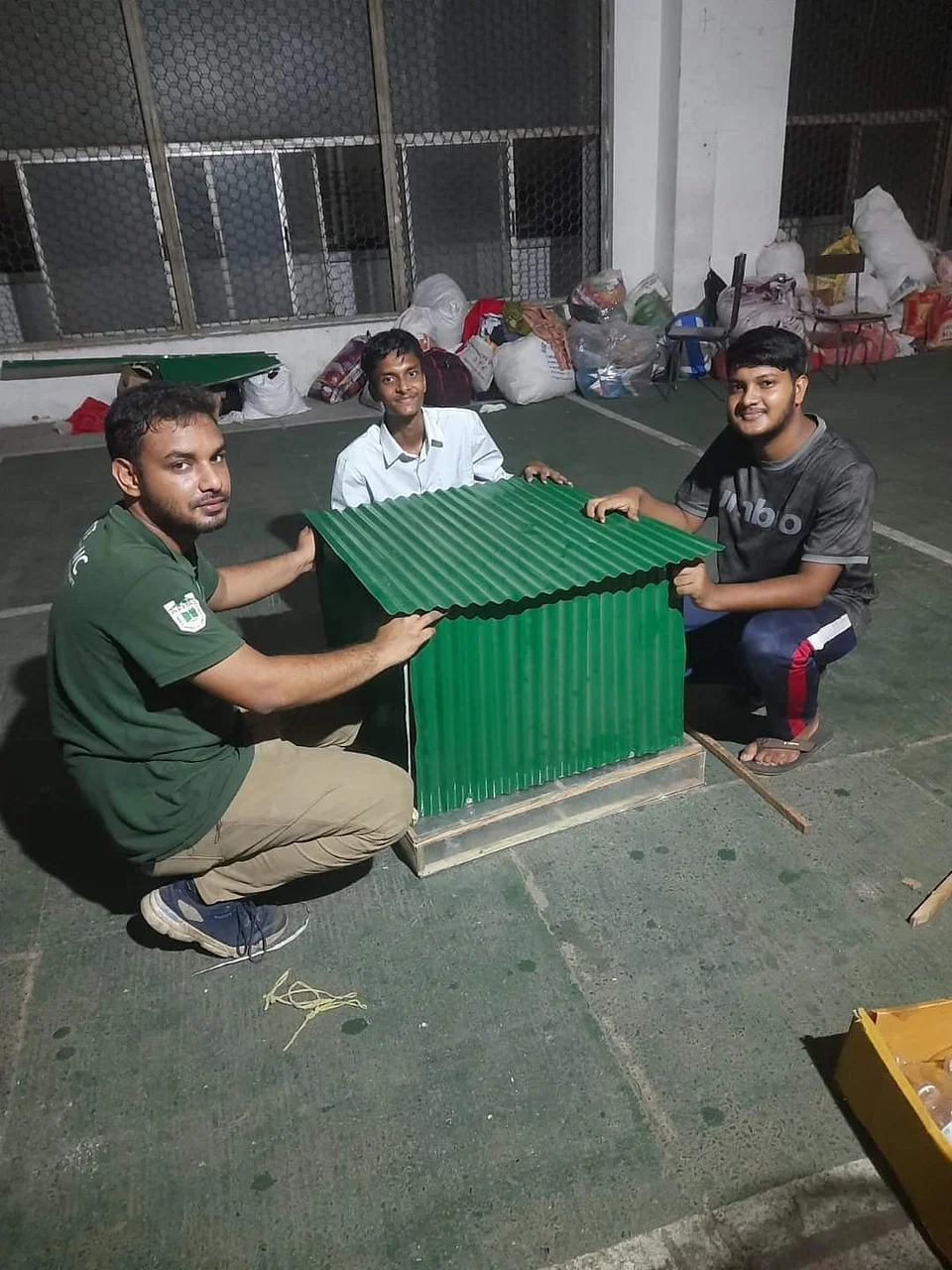Abdullah Al Nayeem, a civil engineering student at Ahsanullah University of Science and Technology, found himself deeply moved while working in flood-affected areas of Feni, Comilla, and Noakhali. Participating in rescue operations and distributing relief supplies, he witnessed the severe hardship that flood victims endure. Year after year, the same communities face devastating losses as their homes are submerged, forcing them into relief shelters where they struggle to survive. This recurring cycle of suffering inspired Abdullah to seek a permanent solution. Upon returning to Dhaka, he began exploring ways to address this issue, eventually stumbling upon the concept of floating houses. Abdullah elaborated, saying, “Although the idea of floating houses has existed for a long time, very little practical work had been done to bring it to life. As I researched further, I realized that the floating mechanisms in such houses often require extensive repairs once floodwaters recede, making them expensive and difficult to maintain. This complexity likely stalled the development of the concept. With that in mind, we took on the challenge of creating a sustainable, affordable solution—a house that would be comparable in cost to a regular home, but with the added benefit of being long-lasting and requiring minimal upkeep.” The result of their efforts is a project named Tori, a floating house designed to rise with floodwaters and return to its original position when the water recedes. Abdullah worked alongside fellow civil engineering students Siam Al Nahiyan and Abdul Awal to develop the project, with valuable guidance from their professor, Md. Abdul Matin. The team also collaborated with experts, including Syed Nazmul Haque from the Bangladesh Water Development Board and former BRAC engineer Nasrin Jahan. The team’s design consists of two main components: the superstructure and the substructure. The superstructure—the main living area—resembles a typical tin-roofed house, while the substructure is built from durable, rust-resistant, and lightweight materials that enable the house to float during floods. Inside, the house will feature essential amenities like a bathroom, kitchen, veranda, and water tank, ensuring it remains fully functional during and after floods. “We’ve created a 1:6 scale mini model for testing purposes, which cost around 7,000 taka,” Abdullah shared. “Now, we’re waiting for funding. Once we secure the necessary resources, we’ll be able to construct the full-scale house in just three to four days.” This innovative approach promises not only a practical solution to a persistent problem but also offers hope to communities repeatedly displaced by floods. By making sustainable housing accessible, Abdullah and his team aim to reduce the devastating impact of floods on vulnerable populations, paving the way for a more resilient future.
Source: Prothom Alo


















